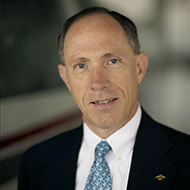The applicant, flying a Cessna 150, had completed most of his practical test and was on the downwind leg for the final circuit. The common traffic advisory frequency (CTAF) was alive with chatter when a Bonanza pilot announced that he was inbound from the northwest and would be joining the pattern for Runway 33 on the 45-degree leg for the downwind.
The turn from downwind to base is one of the most critical because it provides an unobstructed view of the final approach. If another aircraft suddenly appears on final, it is easy to extend the downwind and avoid the conflict. The Bonanza suddenly appeared from the southeast, not the northwest as originally called, and lined up for a straight-in approach to Runway 33. Some pilots are dyslexic about their location when looking at the heading indicator. They key the mic before thinking through their orientation. The message for us is that they may, or may not, be where they say they are. "Trust, but verify," as former President Ronald Reagan was fond of saying.
The applicant spotted the traffic, and the examiner suggested that they extend the downwind leg of the pattern. So far, it was like any other day at a typical, busy nontowered airport. Expect the unexpected and you won't be surprised. As the Bonanza flew down final approach, another aircraft lined up for departure on Runway 33. Whether the departure was ill-timed or not, we'll never know. FAR 91.113, the right-of-way rule, provides that aircraft on final approach take precedence over other aircraft in flight or on the ground. I don't know about you, but I've never misjudged a departure. It's hard to be humble with a record like that. Of course, one doesn't deliberately break the rules, but situations like this one are where timing, judgment, experience, and some charity come into play. The proper thing would be to go around and re-enter the downwind, remembering that humans, who are subject to occasional lapses, operate aircraft.
The Bonanza pilot decided that the extra three minutes it would take to get back around to final was too much and threatened the Cessna departing in front of him with, "Hurry up! I'm going to land on top of you." The examiner suggested that the applicant pay close attention because what was likely to take place would be educational. Two other aircraft either in the pattern or on the ground radioed, "Bonanza on final at Doeville, check your gear," and "No gear - go around!" There was no response. You know what happened next.
The Bonanza stopped in record short distance. To my knowledge, the factory doesn't publish landing slide figures. There would be variables to consider such as the texture of the pavement, whether the aircraft was equipped with a two- or three-bladed propeller, and the number of antennas on the belly. Our friend, who was in such a hurry to land, was probably wishing that he had listened and taken the time to go around.
Rage and impatience have no place in the sky (or on the highways). May the Bonanza pilot see the error of his ways and rejoin us with a calm and forgiving demeanor. The Cessna 150 was now on final, and the examiner was watching the applicant to see what his next move would be. Distraction is a major cause for mishaps, and there was a big one, sitting right in the middle of the active runway. The applicant was in no hurry, having just observed a powerful lesson in time management. He opted to go around and land on the crosswind runway.
Bruce Landsberg is executive director of the AOPA Air Safety Foundation.



